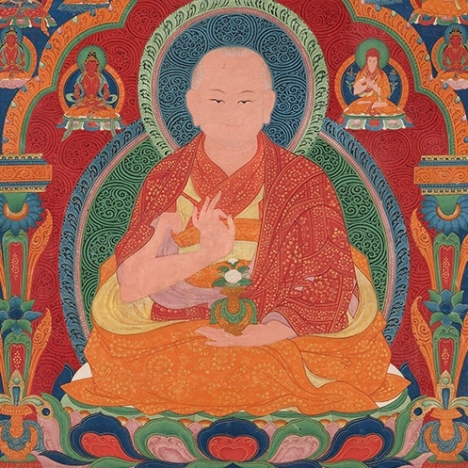
Lhachok Sengge (1468–1535), the ninth abbot of Ngor Monastery, was a great patron of the arts. In fact, he is known to have commissioned several paintings now in the collection of the Rubin Museum.
Sculpture carved from ivory, a costly import, is unusual in the Himalayas. This one harmoniously combines elements of different artistic conceptions and time periods. The Indic facial features, including the gentle smile and the cape-like outer garment covering the figure’s back, can be traced to teacher representations from the thirteenth and fourteenth centuries. The physicality of the garments, which fully cover the legs of the teacher, is an expression of a newer artistic conception with an emphasis on repeating patterns in the folds of drapery concealing the body that starkly differs from earlier traditional representations. The great abbot wears a scholar’s cap with one earflap placed on top of the other so that they hang down his back. This fashion was associated with translators of sacred texts.
H 5 1/4 x W 3 1/2 x D 2 1/4 in.
C2003.23.2, HAR65232
- https://dev.rubinmuseum.org/images/content/721/c2003.23.2har65232-front-(b)__zoom.jpg
- https://dev.rubinmuseum.org/images/content/721/c2003.23.2har65232-back-(b)__zoom.jpg
- https://dev.rubinmuseum.org/images/content/721/c2003.23.2har65232-front-(b)__zoom.jpg
- https://dev.rubinmuseum.org/images/content/721/c2003.23.2har65232-back-(b)__zoom.jpg

__slider.jpg)
__slider.jpg)
